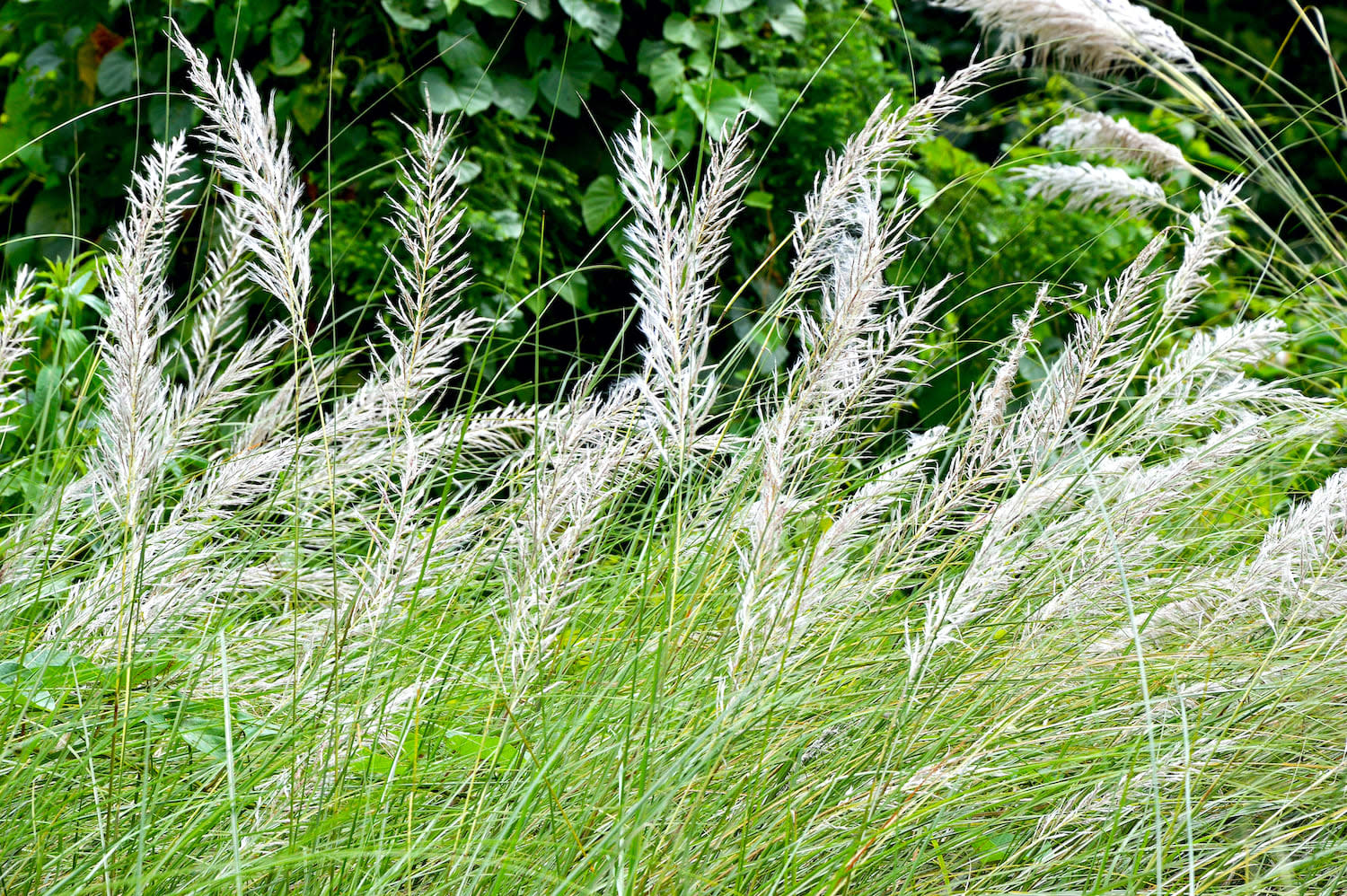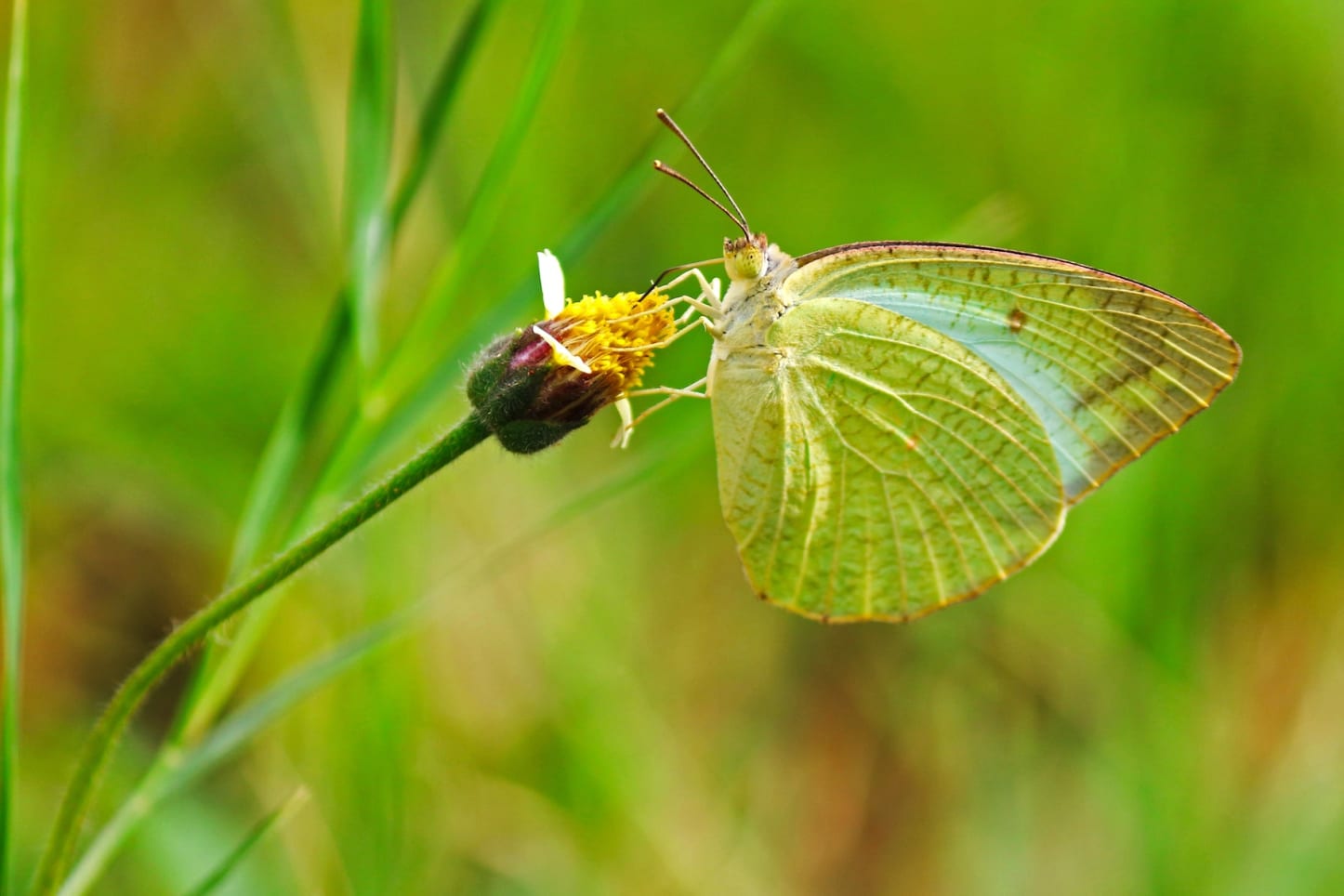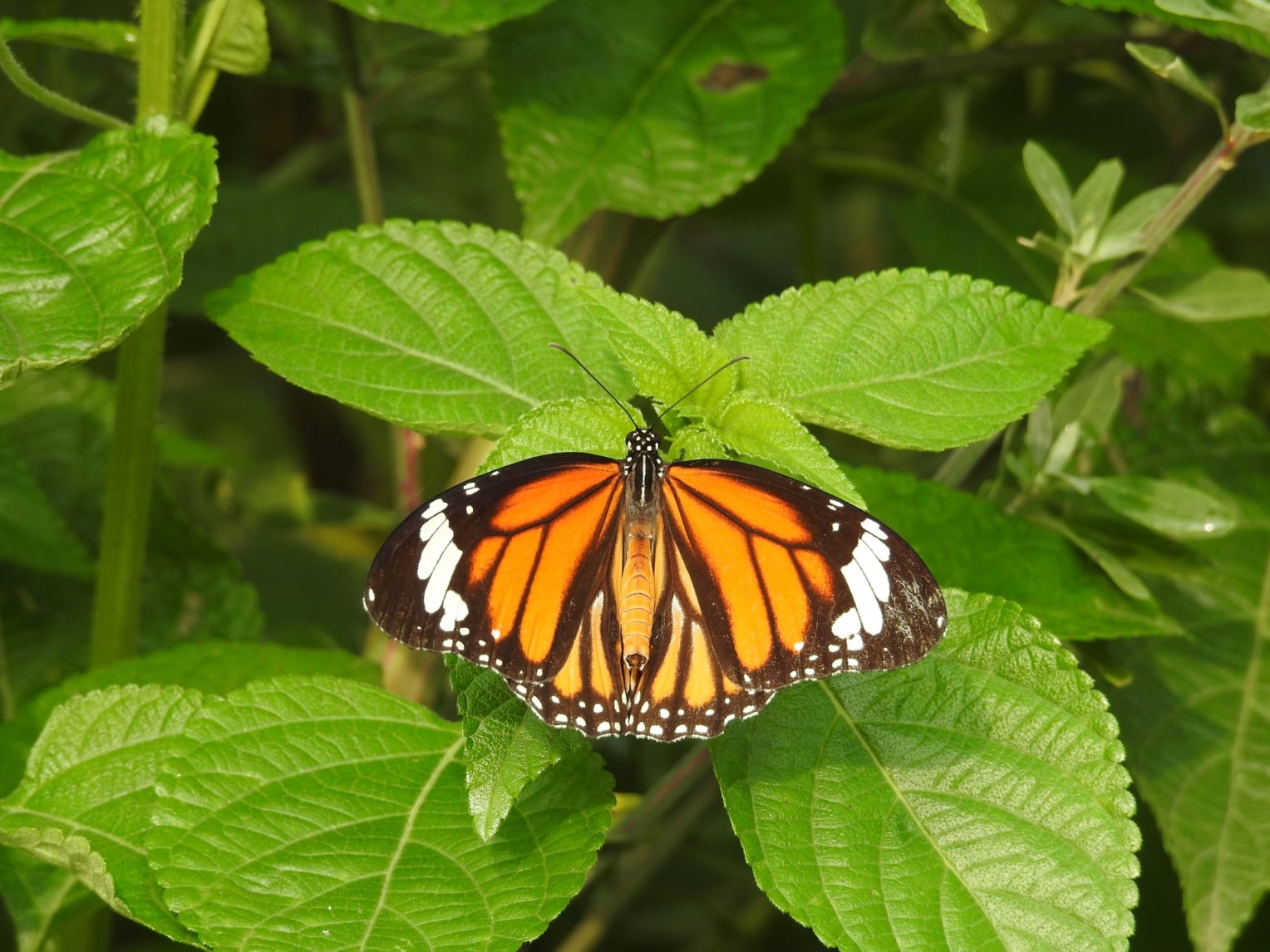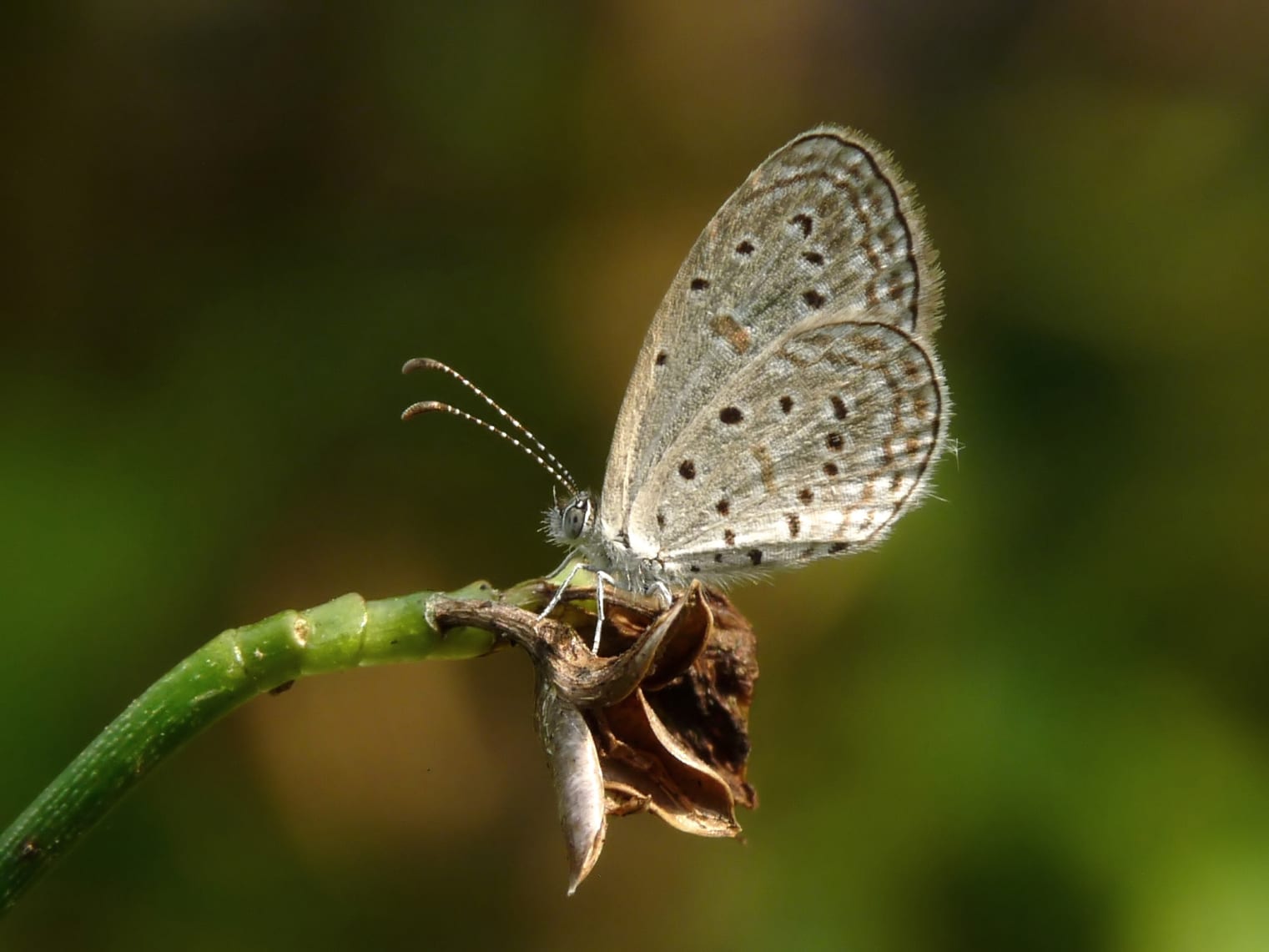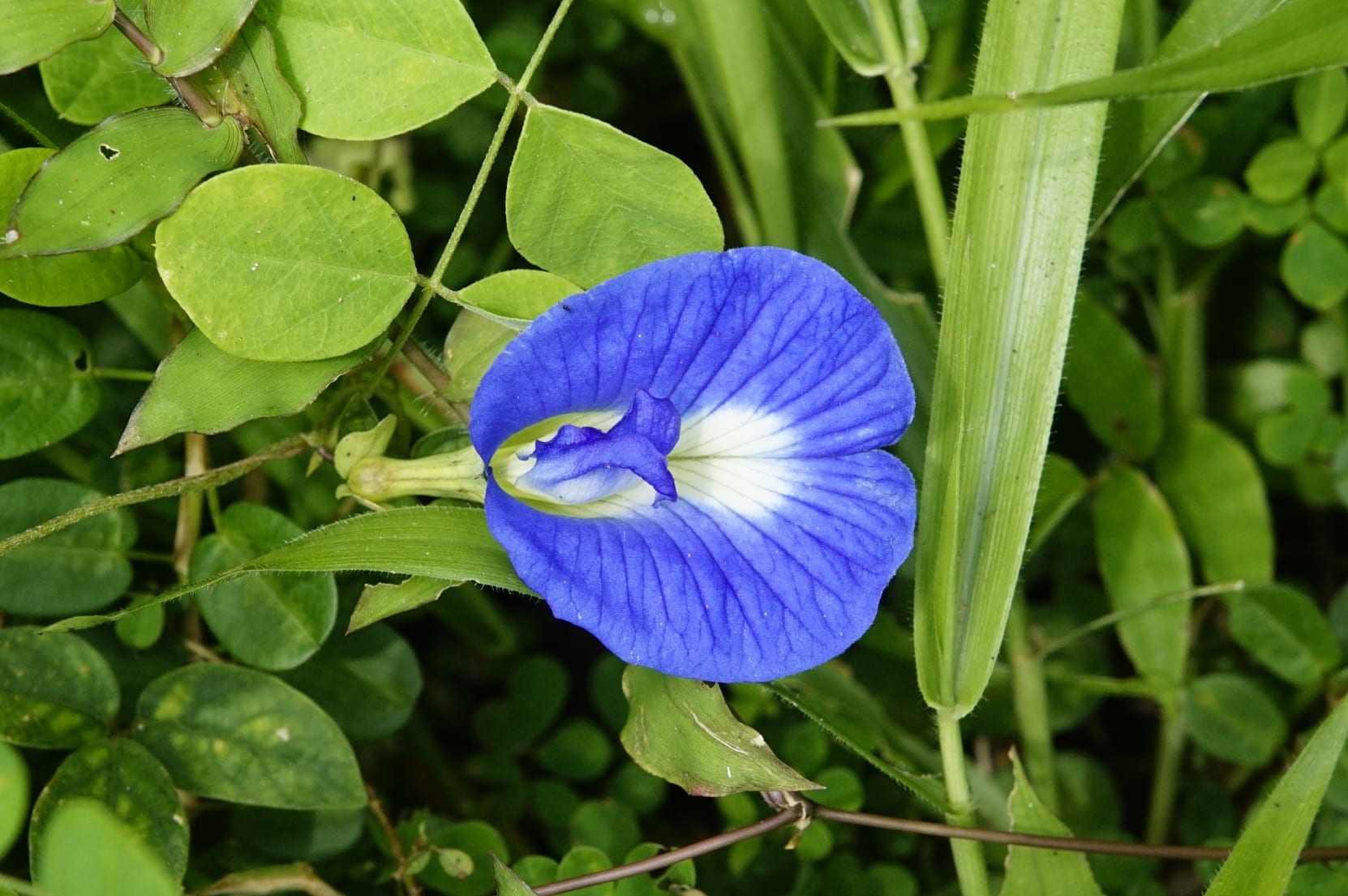 Listen to this article
•
15:34 min
Listen to this article
•
15:34 min
The grass grew like it is supposed to grow — like a tipple of whiskey overflowing down the side of a glass. My little pot of indigo-blue aparajita blossoms looked like it had grass falling out of it. I wondered if I should get a pair of scissors and cut off the invader; because the grass looked like it was going to run over my carefully planted aparajita with careless abandon.
And then I hesitated.
A thought had taken root in my head. It came first, through smell. The sweet, raw smell of crushed grass, a smell I could get just with my face near the pot — came with a memory. The memory was of nippy mornings and smoky evenings. Of a cane basket waiting for foraged flowers and herbs. Of coal-fired havans and the annual fragrance of the flowering saptaparni tree. The memory was of a once-in-a-year chore handed to me. It involved foraging — not for food — but for offerings to the great and angry goddess Kali. Kali puja coincides with Diwali, the time when large parts of India can feel winter coming. The grass was a part of the puja, and was not just any kind of grass. It had to be the first three shoots of Indian grass, forming a neat triumvirate. This was durva or durba (pronounced dubbo with a soft ‘d’) and I was tasked with finding more than 100 of these each year. Each year I would roll my eyes at my mother saying, “but where will I find it,” but I loved the little excursion to the front lawn and sometimes to a neighbour’s — the grass always feeling cool under my bare feet.

A stand of Saccharum spontaneum grass blows in the breeze. This natural scene is much loved imagery in Bengali literature. Cover Photo: Biswarup Ganguly - CC BY 3.0
Unlike rougher strands of older grass, durba was velvety soft and emerald green. It was symbolic of newness, beginnings, and purity. It also became harder to find as housing colony parks became parking lots and a variety of exotic carpet grass — which lay like a mat on the lawn — replaced native grasses in many lawns. The satire was complete as some homes dispatched with grass forever by plonking plastic ‘grass’ on their porches and verandas. A sort of horror show akin to fake plants in posh places trying to create fancy tropical corners — without the inconvenience of soil, watering, or sunshine.
Durba had stood for so much of my childhood. That along with red, bell-shaped hibiscus flowers, and the ends of bel tree branches — three leaves which needed to be wrangled away from tough stems with inch-long thorns — would complete my contribution to the puja. I don’t know if the goddess really needed grass, and neither did I advocate religion, but I think I needed the ritual of that adventure each year. Was I ready then to cut off the same grass which was growing amok in my urban garden?
I wasn’t.
The grass grew wild and lovingly. It didn’t kill the aparajita. Instead, it brought butterflies.
One of the simplest ways to bring butterflies to your garden — however small, vertical or boxed-in your garden may be — is to let wild grasses and wild flowers grow. You should be able to do so through the simple act of planting some soil from a local park in your pots, and watering often. A little world will follow. For if you look closely at grass on the ground, it is never just grass that is growing. You will find wild flowers too, like the tiny but radiantly simple coat button flowers. There will be crab spiders, ants, and ladybugs. And there will be butterflies.
We associate butterflies with gaudy hothouse flowers so much that we forget they also love wild plants with tiny flowers, and acres of wild grass, growing like meadows from the sets of Heidi. The grass growing next to my aparajita wasn’t really wild — it is grown in sedate lawns too — but gardeners tend to consider anything out of their control as wild. In the instructive film, A Little Chaos directed by the redoubtable Alan Rickman, we see Kate Winslet striving to break the mechanised harmony of too much control in gardens. I too believe gardens should mimic nature, and bring out natural patterns of foliage and canopy levels. In my overgrown, beautifully wild pots, I watched common grass yellow and mottled emigrant butterflies flit in, and sit. They ignored the beautiful, showy blossoms, at least for the time I was watching.

The humble grass had won this round. And why not. Those tough little sprigs in my garden were cousins of the grander, fiercer grass that is also the bedrock of the Indian forests. There are grasses that will tower over you and neatly cut your fingers if you touch their blade; tough guys that restrain soil erosion and provide cover to many an animal. There are grasses like Sacchurum spontaneum whose inflorescence looks like cotton wool — glowing in the stark purity of white.
Don’t be surprised if you see a one-horned rhino poking his nose out from brackets of these grasses. Apart from rhinos, elephants and tigers use grasses as habitat. Near wetlands, Phragmites grasses grow toweringly high. Bitterns and water birds hide at the feet of these columns, and many a fisherman will build fences out of these grasses. And then there is the bamboo, which completes an Indian forest (and may have a snake under it). The creak of bamboo in the hot Indian forest is as characteristic a sound as the plaintive wind through pine needles in the Himalayas.
Two years ago, I was doing a biodiversity survey in Delhi’s Sarojini Nagar. I was looking for wildlife that the environment impact assessments had overlooked, for all the trees in the area were slated to be cut down for ‘redevelopment’. I found many birds in the trees and it was only by chance that I looked down. What I saw was a tiny butterfly, in something that was easily the most overlooked aspect in urban habitats — slips of wild grass growing under trees. The grasses still held morning dew, and also held up wild flowers like precious little embroideries in an unpredictable tapestry. A grass yellow butterfly was laying eggs in the grass. In another patch, a gram blue and a grass blue butterfly rested.

These were such small spaces that the easiest thing in the world seemed to be to overlook them, concretise them or run them over. But aren’t the smallest things always the most glorious, the most humbling? I counted many butterflies that day; and the wild grass was a character in itself.
And the gleeful grass in my pot was a relict of wildness, of the forays of wild things to new places, a memory of the tiger in elephant grass. It had rooted me; and I had to return the favour.



